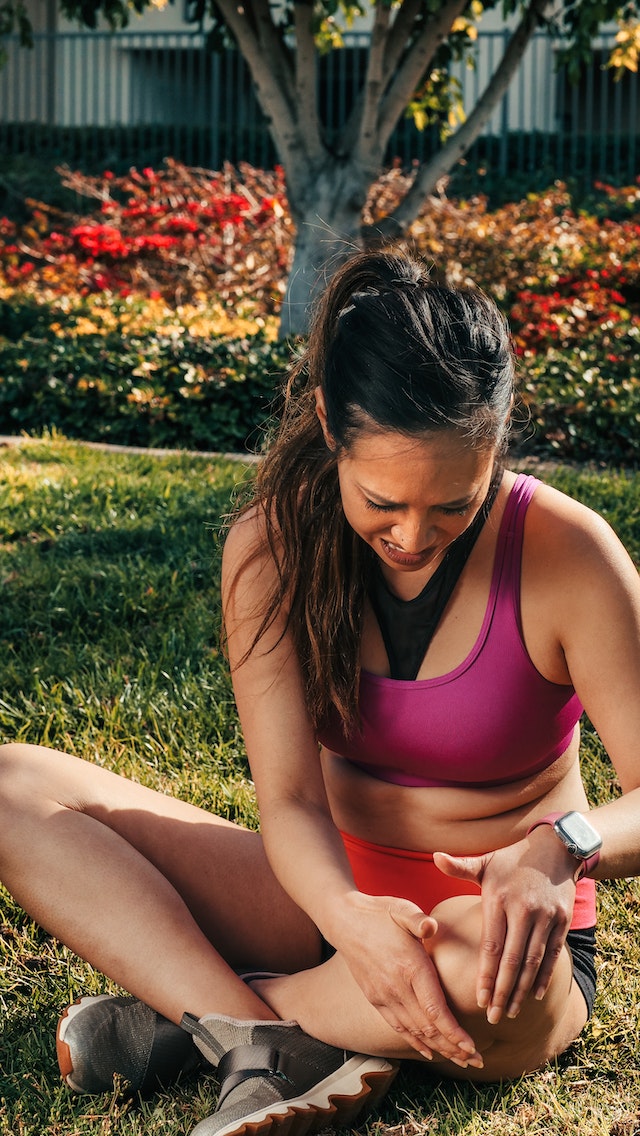
Knee pain is a severe issue for many people. Your knees are the largest joints in your body and the most common source of pain and injury.
Your lifestyle habits can make your knees more vulnerable to chronic pain. Pain is not just a symptom of something wrong, but it is often the cause of something wrong. Pain is a message your body is trying to tell you in your body language. This information should not be dismissed. Awareness and understanding of knee pain’s origins can improve your quality of life.
Here are five bad habits that contribute to knee pain.
1. Wearing the Wrong Shoes
Shoes come in so many styles, shapes, and sizes that it is easy to overlook that their primary purpose is to keep your feet protected, supported, and comfortable.
Wearing the wrong shoes for your feet can do more harm than good. Shoes that are too big, have poor arch support, thin soles, and poor shock absorption can cause pain in the ankles, knees, and hips.
When in the market for a new pair of shoes, find shoes that fit your feet properly. Too tight shoes increase stress on the tendons and ligaments. But the right shoe will evenly distribute the pressure onto your arch, ankle bone, and the soft tissues of your foot.
A properly fitting shoe will make your lower legs feel like they are floating in mid-air and keep you energized and active all day.
2. Pounding Your Knees
Standing, running, and walking with a stride that is too long, increases the pressure and pound on your knees. Although you may be craving to keep up with your younger counterparts, this type of knee pounding is not worth the price you will pay over time. This type of gait can be aggravated by using inadequate footwear or carrying too much weight in your posterior area.
The solution is simple: shorten your stride by taking shorter steps and concentrate on good posture.
When walking, keep your torso upright, and your natural walking style will allow your knees to remain protected. When running, try a pair of sports shoes with a heel that is small in size.
Several companies make amazing running shoes with orthotic inserts that give you the proper support.
3. Standing or Sitting Too Long
Your muscles need exercise, and they love to move. When you sit or stand for an extended period, your muscles become stiff and lose their natural elasticity. Stiffness limits the range of motion in your joints, and the different parts of your body that need those joints to function correctly start to move less efficiently. When the cartilage in your knee joint is stiff, it becomes more susceptible to wear and tear.
Your muscles can be strengthened by walking around every hour or so while sitting or standing at work. Take breaks regularly to work your muscles and joints with some simple exercises.
Knee pain is often amplified when you do not move for prolonged periods. Planning several breaks will allow your body to function at peak performance.
However, if you find no relief from moving your body, a knee replacement could solve your chronic pain.
4. Working out Without Warming Up First
Cold and stiff muscles are more prone to injury than warm muscles. A warm-up is essential before participating in any physical activity, including walking, running, biking, and lifting weights.
Your body temperature rises when you start exercising and descends after completing the activity. If you do not allow your muscles sufficient time to warm up before engaging in intense activity, you will likely strain them unnecessarily, which can lead to injury.
Without proper warm-up, you may not be able to achieve full extension, which can prevent an optimal range of motion.
Rigorous gym workouts can be extremely strenuous on your knees, so warm up before and stretch out after.
5. Locking Your Knees
The muscles of the lower extremities are designed to be flexible and moveable. When you lock your knees, you tighten those muscles and tendons, restricting their natural range of movement. This locking happens most often when doing activities like cycling or skating. Locking your knee when lifting objects such as furniture or heavy objects can also lead to injury.
When this occurs, the muscles will be forced to work harder to compensate for the loss of freedom they have been given by locking their joints.
For optimal knee movement, incorporate walking, running, and stair climbing into your daily routine.
Conclusion
You can do so much to maintain your knees’ health by monitoring your habits. You are what you repeatedly do, so incorporate good habits such as exercising and proper footwear into your daily life. Your knees will thank you for it, and you will keep them functioning at optimal performance for many years to come.


